Reseeding Marginal Cropland to Perennial Grasses, Forbs, and Legumes
- Jump To:
- Factors Affecting Grass Selection
- Management Objectives
- Regional Adaptation
- Soil Factors
- Climatic Factors
- Stand Characteristics
- Ease of Establishment
- Risk of Seeding Failure
- Stand Longevity
- Seeding Considerations
- Seedbed Preparation
- Plant Quality Seed
- Seeding Rates and Dates
- Use the Proper Equipment
- Follow-up Maintenance
- Costs
- Livestock Grazing
- Wildlife Habitat Considerations
- Summary
Some of the land currently farmed in Oklahoma is poorly suited for cultivation. Cultivation of such highly erodible soils results in severe wind and water erosion and is not economically sound in either the short-term or long-term.
This fact sheet is designed to acquaint land managers with options relative to establishing and managing permanent vegetative cover on marginal cropland.
Factors Affecting Grass Selection
Permanent grass plantings are long-term conservation decisions. As such, the choice of which grass species or mixture of species for your operation warrants careful consideration. In terms of evaluating grass plantings, you should consider:
- Management Objectives
- Regional Adaptation
- Stand Characteristics
- Seed Availability
- Maintenance Needs
- Associated Costs and Returns
- Invasiveness
When assessing the alternatives for your operation, keep all of these things in mind. Obviously, a grass species cannot be superior in all categories.
Management Objectives
Why are you planting permanent grasses? Compliance with a government program? Livestock grazing? Haying? Wildlife habitat? Erosion control? The objective(s) should be considered before selecting a species or mixture of grasses. If enrolled in the Conservation Reserve Program (CRP), consumptive uses (haying, grazing) are prohibited during the contract. What about after that? Some species offer better grazing than others, some require more maintenance than others. Monocultures (single species) and introduced forage provide poor wildlife habitat. Some introduced forages are invasive such as Old World bluestem, tall fescue, and sericea lespedeza. Invasive plants escape from where they are planted.
If not a part of a government program, you may have specific needs in terms of forage production (amount, quality, and season of production). For grazing purposes, it may be more desirable to have several pastures with different species in each, whereas, if wildlife are an important consideration, a mixture of species native to the site is more desirable.
Regional Adaptation
Some of the common species used in revegetating marginal croplands are listed in Table 1. The two primary considerations when evaluating particular grass species (or mixture) deal with soil and climatic concerns. Many reseeding projects are located in western Oklahoma. This limits the applicability of some species.
Table 1. Recommended Species for Reseeding Croplands.
| Species | Cultivar(s) | Site(s) |
|---|---|---|
| Native Grass Mixtures | ||
| Alkali Sacaton | ‘Saltalk’. | Alkaline, Saline |
| Big Bluestem | Kaw’, local harvest | Loams, Clay Loams |
| Blue Grama | ‘Hachita’, ‘Lovington’ | Clays & Clay Loams |
| Buffalograss | ‘Texoka’ or Sharp’s Improved | “ “ “ |
| Canada Wildrye | No Commercial Cultivars | Sandy to Clay Loam |
| Eastern Gamagrass | No Commercial Cultivars | Bottomlands |
| Indiangrass | ‘Cheyenne’ (west), ‘Osage’ (east) | Sandy to Clay Loam |
| Little Bluestem | ‘Cimarron’, ‘Pastura’, ‘Aldous’, local harvest | “ “ “ |
| Sand Bluestem | ‘Woodward’, local harvest | Sandy to Sandy Loam |
| Sand Lovegrass | ‘Bend’, local harvest | “ “ “ |
| Sideoats Grama | ‘El Reno’, ‘Premier’, ‘Vaughn’ | Sandy Loam to Clay |
| Switchgrass Upland Sites | ‘Blackwell’, ‘Caddo’ ‘Kanlow | “ “ “ |
| Lowland Sites | ||
| Western Wheatgrass | ‘Barton’ | Loams, Clay Loams |
| Introduced Grasses | ||
| Bermudagrass | ‘Guymon’, ‘Hardie’, ‘Midland’, Common | Loamy Sands to Loamy Clays |
| Old World Bluestem* | ‘Plains’, ‘WW-Spar’, ‘Caucasian’, ‘Ganada’ | Sandy Loams to Loamy Clays |
| Tall Wheatgrass | ‘Jose’ | Saline, Sub-irrigated |
| Weeping Lovegrass | ‘Morpa’ | Sandy to Sandy Loam |
| Tall Fescue* | Loams, Clay Loams | |
| Forbs | ||
| Maximilian Sunflower | ‘Aztec’ | Loams, Clay Loams |
| Illinois Bundleflower | ‘Sabine’ | “ “ “ |
| Pitcher’s Sage | ‘Kaneb’ | “ “ “ |
| Prairieclover | No Commercial Cultivars | “ “ “ |
*Invasive Species
Soil Factors
When evaluating different grass options, the most important consideration deals with agronomic factors, e.g., texture, slope, pH, permeability, fertility. Generally speaking, most reseeding efforts are directed at marginal croplands, i.e., highly erodible soils. In Oklahoma, such sites are typically either (a) coarse-textured (sandy) soils highly susceptible to wind erosion and/or (b) shallow, upland soils, coarse- or fine-textured, with slopes greater than 5 percent. By their nature, these sites are generally droughty and, following years of cultivation, tend to be low in fertility. Such sites require careful attention to control erosion during seedling establishment and usually call for some type of temporary cover crop.
Generally, upland soils in western Oklahoma are neutral to slightly alkaline and deficient in phosphorus (P), but sufficient in potassium (K). In Eastern Oklahoma both P and K are usually deficient. A soil test of the area to be seeded is always recommended prior to seeding, so that deficiencies in phosphorus and potassium can be corrected and other problems (e.g., pH, salinity) can be identified. Assistance in soil testing is available from your local County Extension office.
Different grasses have different soil preferences. For example, weeping lovegrass is well adapted to sandy soils but does poorly on heavy clay soils with slow permeability. Species like blue grama are better adapted to clay soils and do not grow well on sandier sites. Other species, like little bluestem and sideoats grama, do well on almost any soil texture. The best source of information regarding your soils is the Standard Soil Survey for your county. In addition to a physical description of your soils, this guide will also outline yield potentials, management considerations, and use limitations. Copies of the Soil Survey can be obtained at most Natural Resource Conservation Service (NRCS) and OSU County Extension offices.
Site factors like soil depth and moisture relations should also be considered. For example, bermudagrass may be a good choice for a bottomland site, but it is less desirable on a more droughty upland soil. Some grasses, especially some of the Old World bluestem cultivars are better than others for iron-deficient soils where chlorosis can be a problem.
Problem sites sometimes encountered in reseeding involve saline or alkaline soils often accompanied with high water tables. Salt-tolerant grasses like alkali sacaton, tall wheatgrass, or bermudagrass are usually the best candidates for these problem sites.
Climatic Factors
Climatic factors important in choosing a grass species include such things as precipitation (both annual and seasonal) and temperatures. Western Oklahoma is characterized by extremes in each of these. Seeded grasses should be able to establish quickly and be both drought and cold tolerant. These requirements restrict the use of many alternative species from the outset. With few exceptions, most of the grass species discussed in Table 1, or at least certain cultivars of these species, have demonstrated good winterhardiness in western Oklahoma.
Some species which are not well adapted for most of western Oklahoma include kleingrass, tall fescue, and bahiagrass. Some particular cultivars of adapted species which lack winterhardiness for most of western Oklahoma include ‘King Ranch’ bluestem, ‘Renner’ weeping lovegrass, and ‘Coastal’ bermudagrass. Keep in mind that management can play a key role in determining drought- and winterhardiness.
Stand Characteristics
Stand characteristics conducive to successful to plantings include ease of establishment, low risk of failure, and good stand longevity. In addition to these, the ability to hold the soil, either by providing good ground cover and/or dense root systems, is a desirable trait from a conservation standpoint. Some new grasses are being promoted but lack a long-term track record. Use only species that have an established record.
Ease of Establishment
Ease of establishment is affected by many factors, including the species of grass, weather, establishment practices (seedbed preparation, seed germinability), and others. Generally speaking, it takes two years to obtain a good stand of native perennial grasses. However, by following certain guidelines outlined below, productive stands can be obtained in one or two years if rainfall is adequate and/or irrigation is available.
Some species are more “weedy” than others, i.e., they tend to establish quickly such as Old World bluestems and tall fescue. Note that bermudagrass planted early, well fertilized with normal rainfall, can establish in one year. Introduced plants are easier to establish because of the fertilizer response. Stands of native grasses can be obtained in two years when conditions are good.
Risk of Seeding Failure
At best, seeding failure is a calculated risk and there is always the possibility of stand failure. This risk may run as high as 70 percent in drought years, but is generally in the range of 10 to 30 percent. As mentioned previously, a host of factors dictate whether or not a stand is attained. To give your stand its best odds for success, try to incorporate as many “advantages,” i.e., weed control, proper seedbed, quality seed, etc., as possible.
Because grasses are often slow to establish, some landowners become impatient and declare their stand a “failure” after only one growing season. Always give a stand at least two growing seasons before declaring it a failure and plowing it up. Being able to recognize the desirable grasses as seedlings will help you determine the degree of success of your plantings.
Stand Longevity
How long will a stand of grass remain productive? The answer depends on several factors, including the species of grass, growing conditions, and subsequent management. In most situations, adapted perennial grasses can remain met. This may mean periodic weed control, burning, fertilization, and always includes good grazing management if the stand is being grazed.
The “no-use” clause of the CRP may present a problem in some instances. Under such conditions of abandonment, some grasses may accumulate such a load of herbage to be detrimental to the vigor of the grass stand. In a production situation, this “stagnation” is prevented by grazing, haying, or burning.
Seeding Considerations
Proper prior planning prevents poor product performance. These seven “P’s” should always be remembered when contemplating establishment of permanent grasses. Regarding seeding, you should remember these points:
- seedbed preparation
- select adapted species (or mixtures)
- buy quality seed
- seeding rates and dates
- use the proper equipment
- follow-up maintenance
As you try to “cut corners” here and there to keep costs down, keep in mind that each corner you cut will increase the risk of stand failure.
If the seeding is conducted in conjunction with a government program, certain guidelines must be followed relative to seeding establishment in order to qualify for government cost-sharing. This may include certain restrictions as to the types of seedbed preparation, allowable species and/or mixtures, seeding rates, and other factors. Check with your local NRCS office for the specifications for your particular area.
Seedbed Preparation
Proper seedbed preparation is second in importance only to favorable weather in grass establishment. Grass seeds are typically very small and need every establishment advantage they can get. A well prepared seedbed ensures good soil-seed contact which is essential for moisture relations. Several types of seedbeds can be prepared, but the two most common involve either (a) clean-tilled or (b) non-competitive cover crop (Figure 1).
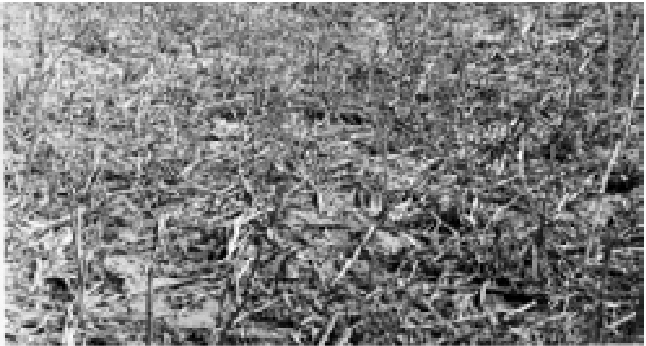
Figure 1. On highly erodible croplands, planting into a non-competitive cover crop like sorghum is more desirable than using a clean-filled seedbed. Photo courtesy of Soil Conservation Service.
Clean-tilled, well-prepared seedbeds are used only when wind and water erosion during establishment are not a problem. The seedbed should be firm, but not hard. Cultipacking may be necessary prior to seedling if the seedbed is too soft, otherwise the grass seed may be placed to deep. Likewise, cultipacking following the drill, wither by press wheels or a separate cultipacker, helps to ensure good soil contact with the seeds.
Since much of the acreage seeded to grass is on more or less “critical” areas, i.e. highly erodible, clean-tilled seedbeds are not always feasible. On this type of site, the role of temporary cover is especially important. Cover crops may be either annual sorghums or millets grown the previous year and left standing or small grains that are killed chemically prior to seeding. When forage sorghums are used, do not allow the plant to mature and produce seedheads. Ideally, about 12 inches of stubble should remain to plant into the following spring.
A popular technique recently developed involves planting the grasses into “graze-out” wheat. This technique provides a good, firm seedbed and standing cover for emerging seedlings. However, new seedlings may be more susceptible to drought during the year of establishment, as the small grains tend to deplete much of the soil moisture prior to planting.
When planting into small grains, it’s generally best to kill or suppress the standing cover with a herbicide prior to planting. Paraquat and glyphosate can be used for this purpose. See the labels of these herbicides for specific rates and other precautions.
Plant Quality Seed
Always purchase your seed from a reputable seed dealer. If there is any doubt about seed purity or germination, ask to see the seed analysis. The seed analysis is an unbiased way of ascertaining seed quality, pure seed content, germination, inert material, weed seeds, and finally the pure live seed (PLS) content.
Always try to obtain seed (or sprigs) with known areas of adaptation. Sprigs should be kept cool and planted within 24 hours. This can be done by buying either (a) locally grown seed and/or (b) a “named” cultivar, e.g., ‘Kaw’ big bluestem or ‘WW Spar’ Old World bluestem. Many times, especially with native grass mixtures, seed are sold as “native mix.” When purchasing such seed, try to limit your purchase to locally produced seed (generally within a 100-mile radius of your location).
In recent years, two different “forms” of grass seed havebeen available: (a) the “chaffy” seed, and (b) the “naked grain” or “caryopsis” (Figure 2). The caryopsis represents the grass seed without its attached awns and subtending appendages (glumes). Which of these forms of seeds is best is open to debate. The caryopses offer lower seeding rates and more uniform emergence when conditions are optimal. However, such seeds may also be more susceptible to fungal diseases in the soil. When planting early in the season (February – April), it’s probably best to go with the chaffy seed, whereas either type may be used when planting later (May-June).

Figure 2. Equal number of caryopses (left) and “chaffy” (right) seed of indiangrass.
Seeding Rates and Dates
Planting rates will vary with species (Table 1). For native grasses, the rate ranges from about 3 to 8 pounds PLS per acre. For Old World bluestem, rates of 2 to 3 pounds PLS per acre are recommended. Weeping lovegrass should be planted at 2 to 5 pounds PLS per acre. Bermudagrass should be sprigged with about 15 to 25 bushels of sprigs per acre or seeded at the rate of 5 to 10 pounds PLS per acre for seeded bermudagrass. Keep in mind that most of the sites are less than optimal, so you may wish to lean toward the heavier seeding rates to ensure a quicker stand. Also, if using modified seed (caryopses), seeding rates may be reduced by 50-75%, depending on the species involved.
Warm season grasses should be seeded between March 15 and May15 in order to capitalize on favorable moisture patterns. Some successful seedings have been obtained after June 1, but the chances for success decrease rapidly after that date. Cool-season grasses (wheatgrasses) should be planted in September or October.
Use the Proper Equipment
Grass seeds, because of their small size and often “chaffy” nature, can pose problems for common seeding implements like grain drills. All types of equipment ranging from modified cotton planters to homemade drills to fertilizer spreaders have been used successfully. However, the most effective, efficient equipment is that which has been specifically designed for seeding grasses (Figure 3). This means commercial drills like Truax, Horizon, Nesbitt, Tye, Brillion, and others. These drills have special attachments like double-disc openers, depth bands, packer wheels, seedbox agitators, and other items which help to ensure a uniform planting rate and depth. In some areas, such drills are available for rental from the local Conservation District.
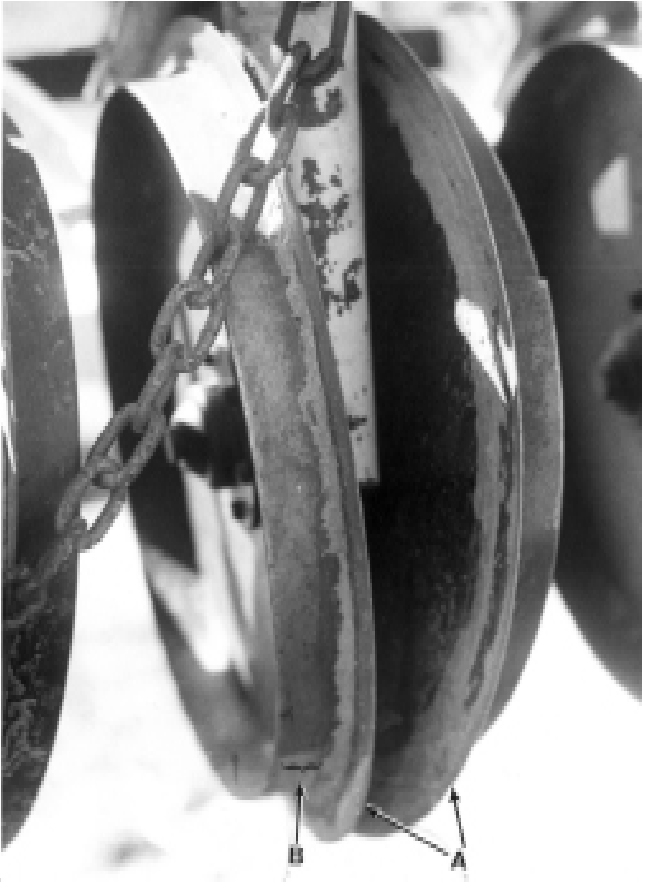
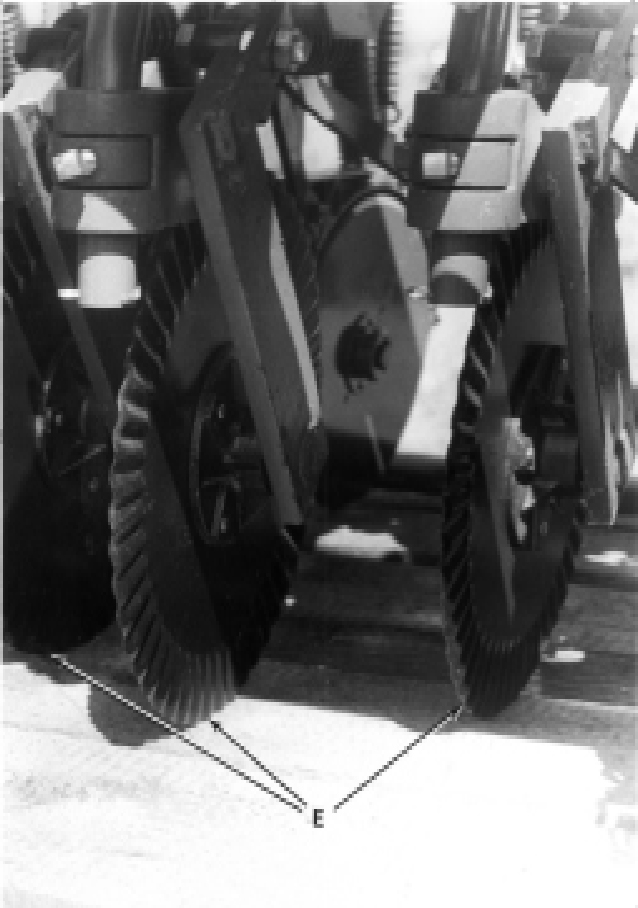
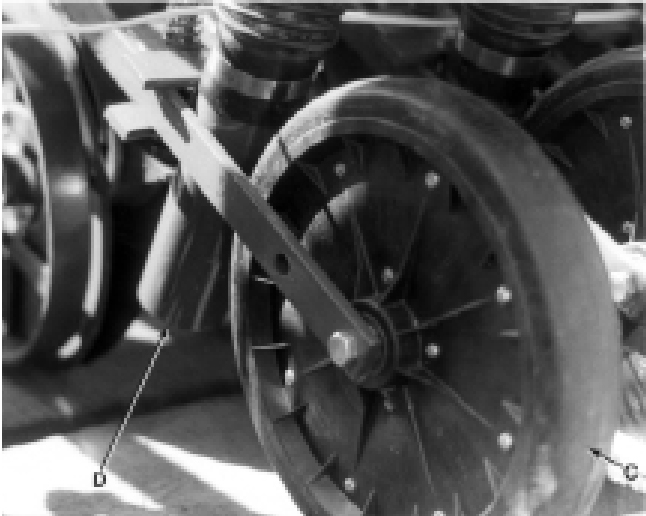
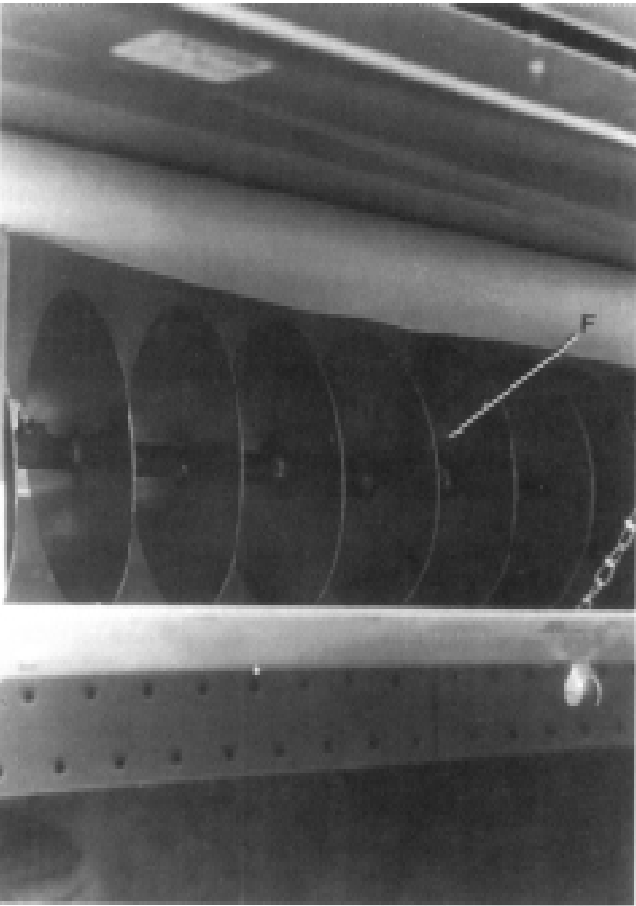
Figure 3. Specially modified drills are preferred for planting grasses. Desirable features include:
- double-disc openers,
- depth bands,
- press wheels,
- large drop tubes,
- cutting coulters, and
- seedbox agitators.
Follow-up Maintenance
Weeds (forbs and grasses) are very competitive with seedling grasses and can be a serious problem in establishing a stand. Broadleaf weeds like kochita, Russian thistle, bindweed, silverleaf nightshade, pigweeds, and others, as well as grasses like animal bromes, annual threeawn, crabgrass, red sprangletop, witchgrass, sand dropseed, silver bluestem, Old World bluestem, and tall fescue can be major problems. It may be necessary to control these weeds, either by herbicides, mowing, or grazing.
Chemical weed control must be approached cautiously with seedling grasses to prevent herbicide injury to the grasses. Broadleaf weeds can be controlled selectively with 2,4-D. It is best to wait until the desirable grasses have at least five leaves and to use a 1/2 to 3/4 lb/A rate of the amine formulation. Spray when weeds are 2-4 inches tall and good growing conditions are present. Special precautions should be taken with bromgrass, buffalograss, and grama grasses since these species are more sensitive to herbicides than most grass seedlings.
Mowing can be helpful in preventing weeds like Russian thistle from shading out a stand. Adjust the mower height so that the weeds are clipped off just above the desirable grasses. Repeat mowings may be necessary the first year.
Grazing can provide some control on weedy grasses and some broadleafs like Russian thistle and kochia. Be careful not to allow livestock to graze the young grass seedlings before they are firmly rooted since they may be pulled out. It’s best to “flash” graze the stand for a short period of time, then pull off of the area.
If excess herbage accumulations are decreasing the vigor of the stand, burn the stand in the spring. Burning also provides some weed control and stimulates seed production in native grasses. A good fertility program will be necessary for introduced grasses where high production is desirable.
Costs
Costs may be broken down into establishment-related (seed, seedhead preparation, equipment) and maintenance-related (weed control, fertilizer, labor, fencing). Seedbed costs may include preparation, intermediate crop (if required), starter fertilizer, equipment rental, fuel, and labor costs. Maintenance costs may include weed control, additional fertilizer (if needed), and fencing (if needed to protect the new planting from grazing).
Livestock Grazing
Different grasses, forbs, and legumes offer different levels of production and management requirements from the standpoint of livestock grazing. When considering a forage, look at your available forage and select a planting that fits your needs. The season of forage production varies among different plants, so try to select combinations that provide for year-round forage.
Wildlife Habitat Considerations
The advantage of planting a mixture of native range plants (native grasses, forbs, legumes, and shrubs) is that they provide excellent livestock forage and plant diversity that many wildlife species require. In contrast, introduced grasses have little food value for wildlife and are usually planted as monocultures or with one other kind of plant (e.g. legumes). The lack of diversity makes these plantings poor wildlife habitat. Since each species of wild animal has different requirements in terms of the kind, amount, and condition of the plant community, the size of the planting and its location in relationship to other habitat types (i.e. upland prairie, upland forest, bottomland forest, cropland, etc.) is very important. An overriding consideration when planning the seed mixture to be used is what species of wildlife are you interested in and what kind of forage does your operation need to balance the needs of livestock and wildlife. Remember, most introduced grass plantings provide very little plant diversity in the form of food or cover. In addition, a planting of native grasses that do not contain native forbs and legumes will also have much less value than a mixture high in diversity of plants native to the site.
The basis for making a decision of what to plant can be made by identifying the soil to be planted. Then obtain the Ecological Site Guide (Old Range Site Guide) from your local Natural Resources Conservation Office. The Site Guide will give you a detailed list of the native plants best suited to the site.
Summary
Reseeding marginal croplands to perennial grasses is a long-term investment. For best seeding success, follow these steps:
- Select the proper species or species mixture based on soil type and ecological site
- Prepare an adequate seedbed
- Seed at the right rate and date
- Use seeding equipment designed for perennial grasses
- Practice weed control as necessary
- Use good grazing management and prescribed fire to keep the stand productive
T.G. Bidwell
Professor and Extension Specialist
Rangeland Ecology and Management
